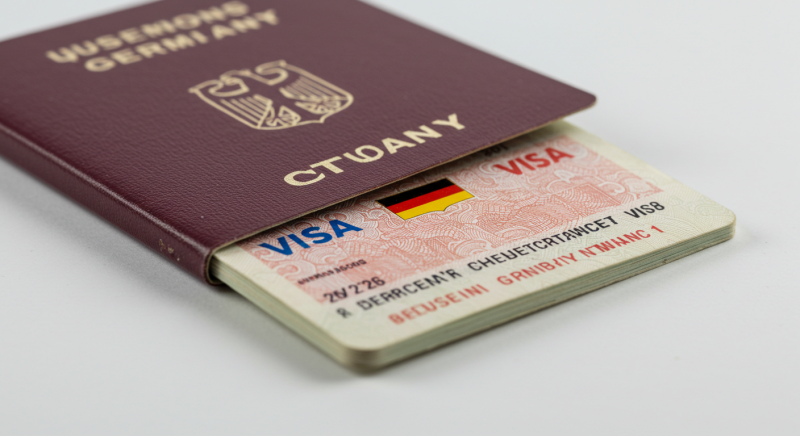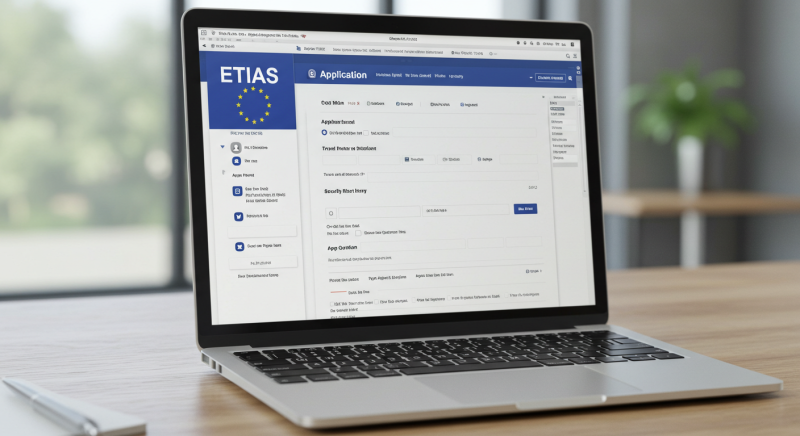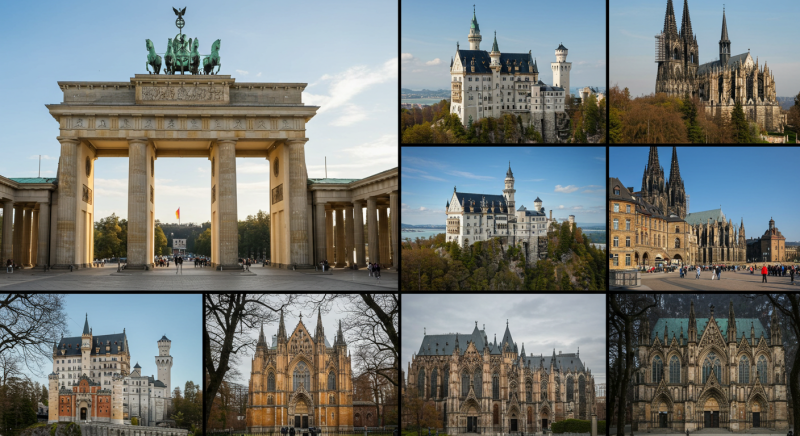Requirement for Travel Germany Visa: Navigating the 2025 Application Process
In 2023, over 14% of Germany visa applications were rejected due to incomplete documentation or unmet requirements. As travel regulations evolve, understanding the latest requirement for travel Germany visa is critical for a seamless application process.

Key Takeaways
- Germany offers multiple visa types, including short-stay Schengen visas and long-term national visas.
- Essential documents include proof of accommodation, financial stability, and valid travel insurance.
- Applications must be submitted in person, with processing times averaging 10–15 days.
- Common pitfalls include unverifiable flight reservations and insufficient financial proof.
- Starting in 2026, visa-exempt travelers must obtain ETIAS authorization.
Understanding the Requirement for Travel Germany Visa
Germany, a Schengen Area member, welcomes millions of travelers annually. Whether you’re visiting for tourism, business, or family reunification, adhering to the requirement for travel Germany visa ensures compliance with immigration laws. Below, we break down the process into actionable steps.
Types of German Visas: A Comprehensive Breakdown
Germany’s visa system caters to diverse travel purposes, from brief vacations to long-term residency. Understanding the requirement for travel Germany visa starts with selecting the correct visa type—a critical step that impacts your application’s success. Below, we detail the categories, eligibility criteria, and use cases for each visa.
Short-Stay Schengen Visa (Type C)
The Type C visa is the most common choice for travelers visiting Germany for up to 90 days within a 180-day period. It grants access to all 29 Schengen countries, making it ideal for:
- Tourism: Explore Berlin’s museums, Munich’s Oktoberfest, or the Rhine Valley’s vineyards.
- Business: Attend conferences, sign contracts, or meet clients.
- Medical Visits: Seek specialized treatments at German hospitals.
- Visiting Family/Friends: Stay with relatives under an invitation letter verified by local German authorities.
Key Considerations:
- Single vs. Multiple Entry: A multiple-entry visa allows repeated Schengen visits, but first-time applicants often receive single-entry permits.
- 90/180 Rule: Overstaying by even one day can result in fines or future entry bans. Use the Schengen Calculator to track your stay.
- Processing Time: Apply at least 15 days before travel, though embassies prioritize applications with urgent itineraries.
Pro Tip: If planning a multi-country trip, apply through Germany if it’s your primary destination (longest stay or purpose of visit).
Long-Term National Visa (Type D)
For stays exceeding 90 days, the Type D visa is mandatory. Subtypes include:
- Work Visa: For skilled professionals with a job offer from a German employer. Fields like IT, engineering, and healthcare are prioritized under Germany’s “Skilled Workers Immigration Act.”
- Study Visa: Required for university enrollment. Students must show €11,208 per year in blocked account funds (as of 2025).
- Family Reunion Visa: Join a spouse or parent residing in Germany. Sponsors must prove sufficient income and housing space.
- Freelancer Visa: For self-employed individuals in arts, tech, or consulting. A business plan and client contracts are required.
Key Considerations:
- Residency Permit: The Type D visa acts as a provisional permit. After arrival, register at the local Foreigners’ Office (Ausländerbehörde) to convert it into a residency permit.
- Language Requirements: Some visas (e.g., work or family reunion) may require basic German proficiency (A1 level).
Pro Tip: Germany’s “Opportunity Card” (introduced in 2024) allows skilled job seekers to reside in Germany for 12 months while seeking employment.
Airport Transit Visa (Type A)
Citizens of Afghanistan, Syria, Iran, and 15 other countries must obtain a Type A visa even if transiting through German airports without leaving the international zone. Exceptions apply if holding a valid visa from the EU, U.S., or Canada.
Scenarios Requiring a Transit Visa:
- Connecting to a non-Schengen flight (e.g., flying from India to Canada via Frankfurt).
- Switching airports within Germany (e.g., landing in Munich and departing from Berlin).
Pro Tip: Check the German Embassy’s transit visa list for your nationality to avoid denied boarding.
Specialized Visas
Germany offers niche visas for unique circumstances:
- Job Seeker Visa: For graduates or professionals seeking employment (valid 6 months).
- Medical Companion Visa: For caregivers accompanying patients receiving treatment.
- Cultural/Event Visa: For artists or athletes participating in festivals or competitions.
Final Note: Always verify visa requirements on the German Federal Foreign Office portal before applying. Misclassification leads to 35% of rejections, according to 2024 Schengen visa data.
Essential Documents for a Germany Visa: A Complete Checklist
Meeting the requirement for travel Germany visa hinges on submitting accurate, up-to-date documentation. German authorities scrutinize every detail to ensure applicants meet immigration standards. Below, we dissect each document’s purpose, common mistakes, and insider tips to streamline your preparation.
Valid Passport: Your Gateway to Germany
Your passport is the cornerstone of your application. It must:
- Expire no sooner than three months after your intended departure from Germany.
- Include two blank pages for visa stamps.
- Be issued within the last 10 years (older passports are invalid for visa issuance).
Why It Matters: Passports nearing expiration or lacking blank pages account for 12% of rejected applications. Renew your passport early if its validity is questionable. For families, each member—including infants—needs an individual passport.
Proof of Accommodation: Where Will You Stay?
German immigration requires verifiable evidence of lodging for your entire stay. Acceptable formats include:
- Hotel bookings with your name, dates, and confirmation number.
- Rental agreements for private stays (e.g., Airbnb).
- Invitation letters from friends or family, notarized by a German registration office (Einwohnermeldeamt).
Pro Tip: Avoid generic booking confirmations. Embassies cross-check reservations with hotels or hosts. If staying with a relative, ensure their invitation letter includes their ID copy, address, and a commitment to cover your expenses if required.
Travel Insurance: Non-Negotiable Protection
Your policy must:
- Cover €30,000 in medical emergencies, including hospitalization and repatriation.
- Remain valid across all Schengen countries.
- Span your entire stay (partial coverage leads to instant rejection).
Why It Matters: German healthcare costs can exceed €1,000 per day for uninsured travelers. Policies must explicitly state “Schengen coverage”—generic plans often lack this clause. Annual multi-trip insurance is cost-effective for frequent travelers.
Financial Means: Proving You Can Afford the Trip
Applicants must demonstrate access to €45–€60 per day, depending on accommodation type. For example:
- A 10-day trip requires €450–€600 in accessible funds.
- Students or job seekers need €11,208 annually in a blocked account.
Acceptable Proof:
- Bank statements (last 3–6 months) showing consistent savings or income.
- Sponsorship letters from a German resident, accompanied by their financial records.
- Payslips or tax returns for self-employed applicants.
Red Flags: Sudden large deposits (e.g., €5,000 added a week before applying) raise suspicion. Authorities prefer gradual savings patterns.
Flight Itinerary: Showcasing Your Travel Plans
While you don’t need paid tickets upfront, a verifiable flight reservation is mandatory. Use dummy tickets from trusted providers to reserve flights without payment.
Why It Matters: Embassies use itinerary data to cross-check travel dates and visa validity. Fake bookings are easily flagged by airline verification systems, leading to rejections.
Pro Tip: Avoid screenshots of third-party booking sites. Opt for PDFs with a valid reservation code and airline contact details.
Additional Documents Based on Visa Type
- Work Visas: Employment contracts, company registration proof, and qualification certificates.
- Study Visas: University admission letters, blocked account statements, and language proficiency tests.
- Family Reunion Visas: Marriage/birth certificates (translated into German) and proof of the sponsor’s income.
The Silent Requirement: A Convincing Cover Letter
Though not always mandatory, a well-drafted cover letter can strengthen your case. Explain your trip’s purpose, itinerary, and ties to your home country (e.g., employment, property) to assure authorities you’ll return post-visit.
Step-by-Step Application Process: Your Roadmap to Success
Navigating the requirement for travel Germany visa involves a structured process designed to verify your eligibility and intentions. Below, we unpack each stage—from form submission to visa collection—with actionable advice to minimize delays and maximize approval odds.
Step 1: Complete the VIDEX Online Application
The VIDEX form is Germany’s digital visa application portal. Accessible via the German Missions website, this form captures personal details, travel plans, and purpose of visit.
Critical Fields to Double-Check:
- Travel Dates: Must align with flight itineraries and accommodation bookings.
- Visa Type: Selecting the wrong category (e.g., tourist instead of business) triggers rejections.
- Employment History: Provide accurate employer details, even if self-employed or retired.
Pro Tip: Save drafts frequently. The VIDEX session expires after 30 minutes of inactivity, erasing unsaved data.
Step 2: Book a Visa Appointment
Appointments are mandatory and booked through Germany’s outsourced partners:
- VFS Global: Handles applications in Asia, Africa, and the Americas.
- TLScontact: Manages appointments in Europe and select Middle Eastern countries.
Timing Is Key:
- Peak Seasons (June–August, December): Slots fill up 6–8 weeks in advance.
- Off-Peak Flexibility: Secure appointments within 2–3 weeks.
Pro Workaround: Check the portal at 8 AM local time daily—canceled slots often reappear then.
Step 3: Prepare Your Document File
Organize documents in this order:
- Printed VIDEX form (signed and dated).
- Passport-sized biometric photos (35x45mm, 80% face coverage, plain background).
- Passport and copies of previous visas.
- Financial proofs, insurance, and accommodation details.
- Visa-specific documents (e.g., invitation letters for family visits).
Photo Pitfalls:
- Rejections occur for shadows, glasses, or incorrect dimensions. Use professional studios familiar with Schengen guidelines.
Step 4: Attend the Visa Interview
While not all applicants face interviews, consular officers may ask:
- Purpose of Visit: “How will you fund your trip?” or “What landmarks will you visit?”
- Ties to Home Country: “Do you have family or property requiring your return?”
Interview Strategy:
- Answer concisely—avoid oversharing.
- Bring originals of all submitted copies (e.g., bank statements, property deeds).
Step 5: Submit Biometrics
First-time Schengen applicants aged 12+ must provide:
- Fingerprints: Captured digitally (exemptions for injuries or disabilities).
- Facial Scan: Neutral expression, no headwear.
Note: Biometrics are stored for 59 months. Repeat applicants within this period may skip this step.
Step 6: Pay Visa Fees
- Schengen Visa (Type C): €90 for adults, €45 for children aged 6–12.
- National Visa (Type D): €75 for most categories (exceptions apply for researchers or athletes).
Payment Methods:
- Credit/debit cards (preferred).
- Cash in local currency (check embassy-specific rules).
Refund Policy: Fees are non-refundable, even if rejected.
Step 7: Track and Collect Your Visa
- Tracking: Use the reference number from your appointment receipt on the VFS/TLScontact portal.
- Processing Times: 10–15 days standard, but extend to 30–45 days for complex cases (e.g., work visas).
Post-Approval Checklist:
- Verify visa sticker details (name, dates, visa type).
- Ensure passport is returned with intact pages.
Upcoming Changes: The EU’s Digital Visa System
By 2030, the EU Visa Application Platform (VAP) will unify Schengen visa processes. While applications move online, in-person biometrics remain mandatory. Early adopters can expect beta testing in 2026–2027.
Key Takeaways for Applicants:
- Triple-check VIDEX entries for consistency with supporting documents.
- Book appointments early during peak travel seasons.
- Prepare for potential interviews with clear, honest answers.
Avoiding Common Mistakes
- Mismatched Travel Dates: Ensure flight reservations align with your application itinerary.
- Insufficient Funds: Demonstrate financial stability through recent bank statements or sponsorship letters.
- Unverified Bookings: Use reputable agencies for dummy tickets to prevent rejections12.
ETIAS Authorization for Visa-Exempt Travelers
Starting in 2026, citizens from the U.S., Canada, and other visa-waiver countries must obtain ETIAS before entering Germany. This €7 online authorization enhances security and is valid for three years. Apply via the Official ETIAS Website6.
Conclusion
Navigating the requirement for travel Germany visa demands attention to detail and proactive planning. By understanding visa types, preparing accurate documents, and avoiding common errors, you can increase your approval chances. With ETIAS on the horizon, staying informed ensures hassle-free travel to Germany’s historic castles, vibrant cities, and scenic Alps.
FAQ
Q1: Can I work in Germany on a tourist visa?
No. Tourist visas prohibit employment. Apply for a work visa if seeking job opportunities.
Q2: How early should I apply for a Germany visa?
Submit applications 3–6 weeks before travel to accommodate processing delays.
Q3: What if my visa is rejected?
Reapply after addressing the rejection reasons, such as providing stronger financial proof.
Q4: Do children need a visa for Germany?
Yes, minors require visas and parental consent documents.
Q5: Is travel insurance mandatory?
Yes. Purchase policies covering €30,000 in medical emergencies.
Internal Links:
read also US Work Visa: Everything You Need to Successfully Apply


